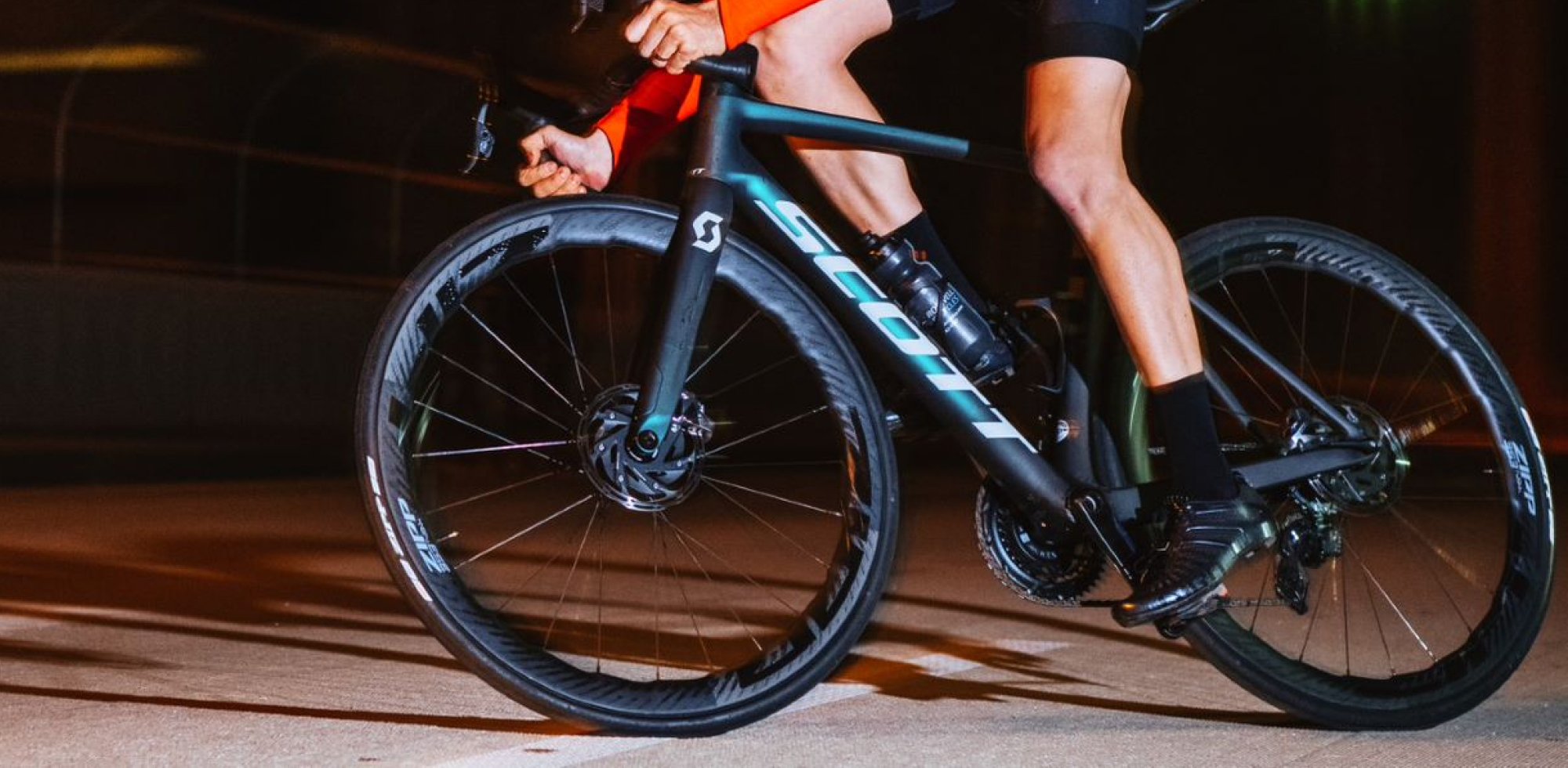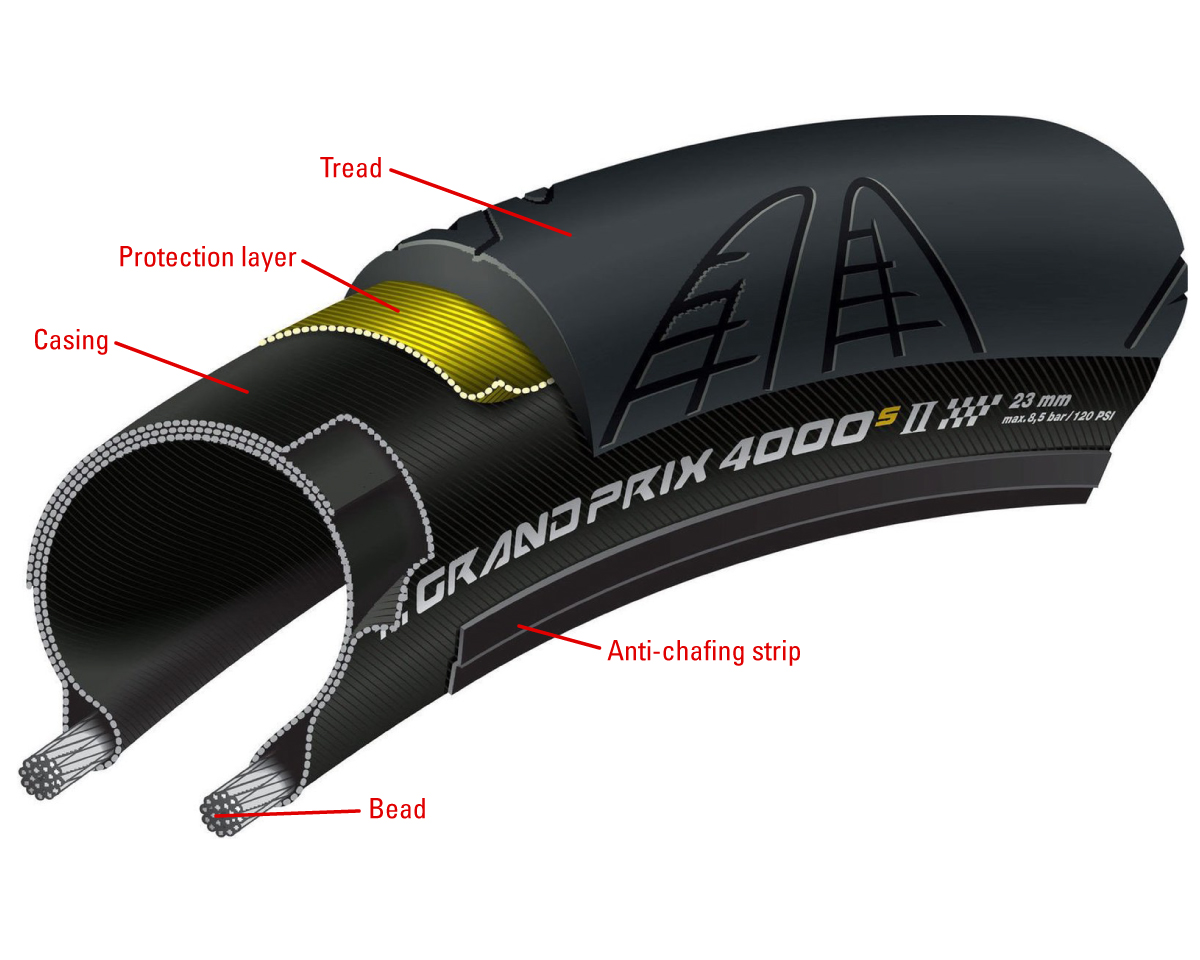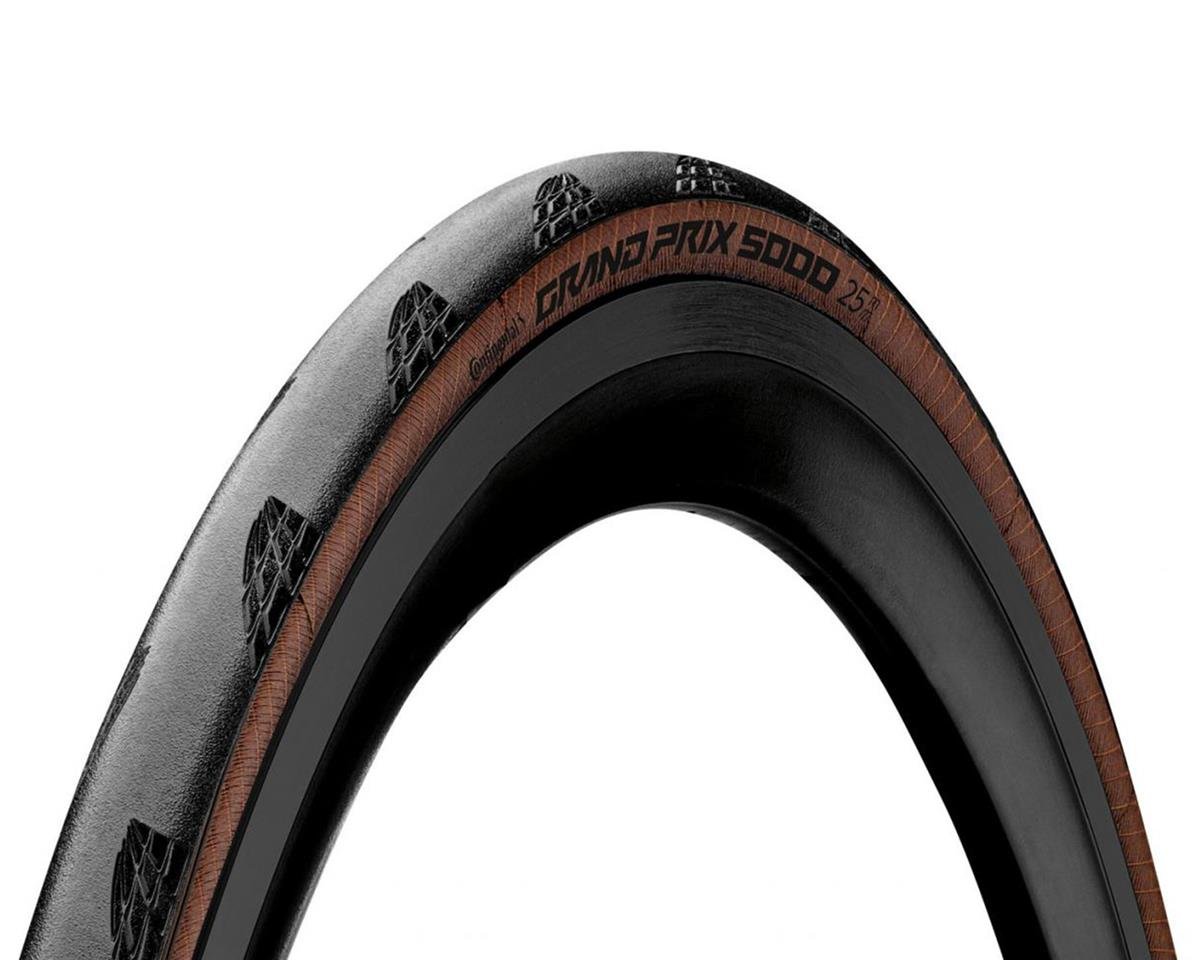Road Tires: Ride faster, farther, and happier
Ride faster, farther, and happier

New tires are the most impactful and cost-effective upgrade you can make to your bike. Recent improvements in road tubeless systems and a trend toward wider tires have opened new avenues of dependability and speed for road riders. Now is the best time to fit some new tires on your bike. At Performance, we stock a dizzying array of tires for club rides, criterium racing, commuting, and everything in between. How do you choose? Read on to find out!
Considerations
Because tires are the only part of your bike in contact with the road, it's important to choose the right tire for your riding conditions and surfaces. Your tire's width, casing, tread, and weight interact with those conditions to determine comfort, safety, speed, and longevity. For example, if you plan to ride long distances, then wide tires with slick treads will prevent pinch flats and provide a comfortable, smooth ride as the miles add up. Durable casing will protect your sidewalls far from home, and tubeless compatibility will provide an additional level of dependability. On the other hand, if you want to race a short hill climb where every gram matters, you may want to avoid the extra weight from width, thicker casings, and sealant.
Width
Road cycling has changed. Gone are the days of skinny 19mm-wide tires inflated to 130psi. Now, even the professional peloton is riding wider and wider tires. Why? Because wide tires are more voluminous, and more volume means you can run your tires at a lower pressure without fear of pinch flats. Lower pressure translates to a larger contact patch for enhanced traction and a plush ride. Combine lower pressure with supple casing, and wider tires will even roll faster than their narrow counterparts because they don't transfer suspension losses to your body, or lose as much energy when flexing under your weight. Wide tires come with certain tradeoffs. Wider tires are typically heavier, and may have a minor aerodynamic penalty compared to narrow tires. If you decide to go wide, be sure to check your current tire clearance against the frame and brake calipers – if you’re running 23mm tires and only have a hair of clearance, you won’t be able to fit a wider tire.

Casing
Your tire's casing plays a crucial role in its durability and ride quality. An easy way to learn more about your tire's casing characteristics is to check its threads-per-inch count (TPI). TPI affects a tire's durability, suppleness, and weight; higher thread counts are lighter and more supple, and lower thread counts are heavier and more durable. Tires with less material in the sidewall trade durability for flexibility. We recommend a supple casing to smooth out the imperfections of a smooth-riding surface, or a durable casing if you're hazards include potholes and broken pavement. Casing and bead also determine whether your tires are tubeless compatible. If you're curious about the tubeless hype, check out our article, Why Tubeless?
Tread
Tread is the part of your tire designed to contact the ground. It's made of a tough rubber compound, and is either smooth or shaped with ridges and grooves. Smooth road tires are sometimes called "slicks," – they are ideal for paved surfaces. They roll fast, and a larger contact patch offers maximum traction on smooth surfaces. However, on some surfaces, you may want to run a "treaded" tire. Their treads are contoured with knobs or grooves, can provide better traction on wet or loose surfaces, and are typically more puncture-resistant due to their thickness.
Weight
Your tire's weight plays an important part in its performance. A heavy tire can feel sluggish under acceleration because it requires more force to rotate than a lighter tire. You will notice this effect during repeated hard accelerations like those in race rides or criteriums, or on climbs where weight determines how much energy you must expend. For this reason you will often see road racers on lightweight "race" tires for events, and heavier "training" tires for off-season rides where durability and longevity matter most. However, weight does not always translate to durability; inexpensive tires are typically heavier because they are constructed from rudimentary compounds that both wear out fast and puncture easily.
What is a clincher Tire?
When shopping for tires, you will likely see the word “clincher” used to describe them. Clincher is a bike industry term that refers to any tire with a stiff bead that hooks into the rim for securement. This category contains nearly all bike tires including tubeless tires. The primary exception to this category are tubular tires which are mounted to the rim using glue. Because of the additional labor involved for installation, tubulars are rarely used outside of high-level road and cyclocross competition. Also, tubeless technology has improved drastically, nearly matching the benefits that found from tubulars.
Did you know, tubeless tires can also be used with a tube? This is an excellent option for cyclists seeking an extra-durable tire setup.
Folding Bead VS Wire Bead
The bead is the strip of tire material that locks into the rim to provide a secure fit. Clinchers can have two different types of beads: folding and wire. Folding road tires usually utilize higher-quality rubber compounds along with durable bead materials such as Kevlar. They are also lighter and offer better performance. Wire beads, on the other hand, are cheaper to manufacturer and are often paired with harder tire compounds. For this reason, wire beads are more common on city bikes and cruisers, whereas, most road racers use folding tires for the added performance. Almost all tubeless tires use folding beads too.
Road Tires at Performance Bicycle
Folding Tube-Type Road Tires
Designed to be used with inner tubes, these tires offer lightweight design and the easiest level of maintenance.
Tubeless Road Tires
For riders seeking a higher level of performance along with increased puncture-resistance, the latest generation of tubeless tires provides the best technological advancements that road tires have seen in years.
SHOP NOWRelated Articles
Bike Tires Home Page
Tires are one of the most important parts of a bike. There are many options so we've compiled our knowledge to help you find the perfect tire.
Learn MoreWhy Use Tubeless Road Bike Tires?
Tubes have been used on bikes for years – is tubeless just marketing hype or is it truly the future of road bike tires.




